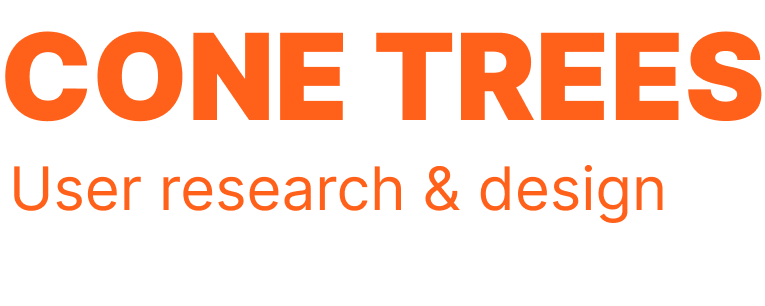Summary
This article puts forth a simple process that you can utilise for conducting effective and efficient meetings (where you work in a framework that aims at accomplishing the goal of the meeting and time is well utilised) at your organisation. You can also find a link to download the MOM (minutes of meeting) template at the end of the article.
Effective and efficient meetings
Meetings are held to achieve certain goals that can be achieved best through discussion between two or more individuals on a predetermined topic. An effective and efficient meeting is one where the goal is achieved for which the meeting was held in the first place and takes place just as planned without any delays, interruptions or running late.
The issue with ineffective meetings
Holding a meeting that does not help achieve its desired goal is useful to nobody; neither you, nor the attendees and neither the organization. Not to mention the fact that the meeting basically stole some time from you and the attendees, which combined together, makes a considerable amount of time that could have been used to complete off a considerable amount of work. The more the number of attendees involved, the larger is the amount of time wasted where productive work could have been done otherwise. Add all such ineffective meetings that occur in a year and you have an interesting figure to deal with, both for time and money, that’s been cutting down on company profit.
The benefit of effective and efficient meetings
In contrast, by holding an effective or efficient meeting, we stand a lot to gain. We achieve a goal that could be achieved best by bringing a number of people to sit down and discuss or understand a topic collectively. Now take the interesting figure from the above paragraph where a lot of time and money was lost, and add it to company profit… which interestingly means a better bonus at the end of the year for you (assuming that’s how your organization works, as most do)!
How to hold an efficient meeting
Holding an efficient meeting is neither tough nor painstaking. All you need to do is follow a simple set of guidelines. Here’s one I put together as part of my responsibility in the user experience department at my organization to standardize UCD methodologies and protocol in order to move towards efficient delivery and measurable impact. The topic of meetings, as you may wonder, is not specific to user experience, but none the less, it’s plays just as important a role just as it does in every other work area.
At the end of the article, you’ll also find attached the following that will come in handy:
- Agenda table
- Attendee list table
- MOM template
The guidelines are broken down into three sections that describe what you should do before a meeting, in a meeting and after a meeting; so that invitees present and absent, as well as non invitees who need access to the information, how ever later in time beyond the meeting, can benefit well from it.
1. Pre-meeting
Requirement: Initiator, Meeting Request
- Every meeting is held for a certain purpose. Be clear of what you want to accomplish from the meeting.
- If the goal can be accomplished without a meeting, don’t hold one. Think whether a meeting is required in the first place, since it will not only consume your time, but the time of others as well.
- Once you are clear of what you want to accomplish from the meeting, create the agenda for the meeting using a table as such:
Agenda Time Topic Person Reponsible 5 mins topic name First name Last name 5 mins topic name First name Last name - Once done with the agenda, send out meeting requests to all the people you would like to come attend your meeting. Mention the agenda you just planned and the purpose of the meeting. This not only exhibits the fact that the reason and plan for the meeting has been well thought through but will also let the meeting invitees know how the meeting will be structured. This gives them the opportunity to come prepared as well.
- If you’re using Microsoft Outlook, mention the following for every meeting request you send:
- Subject- Enter the purpose/ topic of the meeting here
- Location- Enter location
- Start Time- time the meeting begins
- End Time- time the meeting ends
- Agenda- Mention the agenda in the table format provided above, or in a structured way similar to it that outlines the various topics for the meeting
- If the meeting request was sent out at least a day before the meeting, send out a reminder for the meeting in the morning the day the meeting is to occur so you can remind invitees to adjust their schedules accordingly in order to accommodate for the meeting.
- If your meeting involves a presentation, arrive at the meeting location half an hour in advance. You could ask a peer to help you set up for it. A list of tasks to do in this time could be:
- Set up your laptop to work with the projector
- Get the projector screen ready and in place
- Set up and connect to the internet if applicable
- Keep your laptop power supply ready so you it doesn’t go blank in between the meeting
- Ensure that there are two markers available
- Divide the whiteboard into the following areas:
- Action Items
- Parking Lot
- Feedback
- Work with the light settings.
- Set up the audio and recording equipment if applicable
- You could send a reminder to the invitee list ten minutes before the meeting begins.
2. During the meeting
Requirement: Presenter/ Facilitator, Meeting location, Attendees, Note Taker, Time Keeper, Attendee List
- Use the following format to create an attendee list to track how many of the intended attendees have attended the meeting:
Attendee List # Name Present? Y/N First name Last name First name Last name 5 mins topic name First name Last name - Try and get a volunteer to be the note taker for the meeting. The note taker can take notes in the following format:
- Action Items: This is the ‘to do’ list. All through out the meeting, as and when tasks or action items come up, the note taker will mention the persons name and the task to be completed by that person (mention a due date if there is one too)
- Parking Lot: This is where the note taker can ‘park’ all questions or topics that are:
- Taking longer than required to resolve or complete.
- Disrupting the flow of the meeting and you would like that all queries/ discussions be resolved at the end of the topic or meeting.
The note taker will note down questions or topics here which you can either attempt to either resolve them at the end of the meeting if there is time left or take them up with the individual(s) after the meeting.
- Feedback: This will be used at the end of the meeting right before packing up. It is optional but has the advantage of being a good way to record feedback from the invitees on how the meeting went so you can use it to continually improve the quality of meetings over time. This section will be decided into two areas:
- Positives- What people like
- Areas of Improvement- What could be done better
- Try and get a volunteer keep time for the meeting. Let the time keeper indicate to you through hand gestures in relation to the time allocated to each topic in the agenda:
- When you are half way through a topic/ meeting
- 5 minutes before the topic/ meeting is to end
- When it ends
- Every two minutes (or whatever seems logical to you based on scenario) of overtime
- Once the meeting is over, take down notes or click a picture of the notes captured by the note taker.
3. Post-meeting
Requirement: MOM Template
- Use the MOM template attached to archive the minutes of the meeting. You will want to use the notes or the picture you clicked of the notes captured by the note taker on the whiteboard during the meeting.
- Here’s a suggested file naming convention, so it’s easy for the viewer to browse through them in a folder once they’re all stored in one- MOM_Monddyy_purpose. ‘Purpose’ should be a short description.
- Store the MOM at a location your project maintains artifacts. If you don’t have a folder for MOM’s, get permission to and create one and store all the MOM’s there.
- Mail the MOM to all the invitees and other members you would like to. Request invitees to check whether there are any action items marked against them. Those absent to the meeting will benefit as they can find out what happened during the course of the meeting and what the outcome was. In addition, those with action items to complete will be reminded they have tasks to finish as well.
Hope you find this article helpful. Share your thoughts and experiences as to what works and what doesn’t in meetings. If you’re confused about anything mentioned here, let me know.
Related Download: Download the MOM (Minutes of Meeting) template (Microsoft Word/ .doc)


Leave a Reply